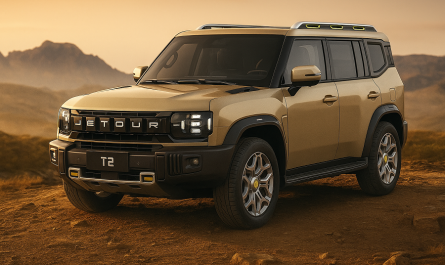To put it bluntly. There has always been something magical about classic cars. We hear the deep throaty growling of the engine, and people turn around in traffic or move in the middle of a conversation at the sound of it. But come on, let us also tell the truth about another thing: living with one is… well… not quite as dreamy as it is on Instagram. They are splendid to look at, of course. But with that chrome laugh? You are left with untested engines, fewer components than you could possibly use, dubious safety, and fuel consumption so heavy it feels like the car has its own drinking habit. That is why the story has been re-written in hushed tones by custom vintage vehicles.
Rather than having to decide whether you want style or practicality (heart or head, as it were), there is now a trend of saying: Why not have both? That is where custom vintage cars come in, and they are changing the script on what it means to own a classic. I can picture myself getting into a car that just seems to have come fresh off the 1972 line, but when you turn the key (or press the start button), you sense that smooth acceleration of a newer engine. Bluetooth is playing your favorite playlist, heated seats are making you toasty, and the windscreen that grunts at you in a papal fashion no longer.

The genius here is that the vintage modern classics do not interfere with the charm. They do not intend to forget the past. They are keeping all those small details that make you fall in love with it: the curves, the lines, the stance, and the character. But under the hood? It is an entirely different world that is environmentally friendly and has efficient engines.
Consider suspension systems in a muscle car that do not make you feel like you have a bucking bronco, loaded on cobblestones. Consider safety features that do not have to spoil that old look but will make you feel safe instead. It is not mere restoration. This is re-creation—the sort that prompts a car collector to lift an eyebrow and remark: Now that is interesting. When you hop into one of these builds, it immediately becomes clear—the past and future are shaking hands right there in the driver’s seat. It is nostalgia with none of the compromises. It is the sense of belonging to a tale that has been going on for tens of years, but which is still new today.
The Experience is the Point
Driving a custom build isn’t like owning any regular car. It’s an experience every single time. You don’t just start the engine — you wake up a piece of history that’s been fine-tuned for today. You don’t just run errands — you take the scenic route, because suddenly every journey feels like a chance to show off your rolling masterpiece.
And here’s the best part: it feels effortless. No more wondering if you’ll break down on the way to brunch. No more babying the car like it’s made of glass. You are reliable without losing that sensual nature that made you fall in love in the first place.
Beyond a Trend: A Growing Movement
Some people still think custom vintage cars are a niche thing — just for collectors or car show fanatics. But the truth? This is a growing trend. Good drivers want to get out of the cookie-cutter blandness of modern SUVs and sedans. They want something that is eye-catching, something to cause a debate, and something that appears to have been designed to suit them. In other words, they want a car whose heart is beating.
The “What If” Factor
Here’s the thought that gets me every time: What if this becomes the new normal? But what would happen if we all began to save and recondition the oldies—treating them as car investments or buying vintage-inspired cars like the modern classics? First, the roads would be a lot more interesting.
And maybe, just maybe, we’d start to see driving as more than just getting from point A to B. We’d see it as an experience — a chance to connect with a machine that’s more art than appliance.


